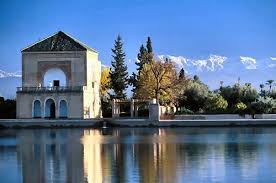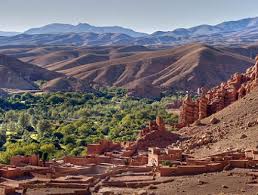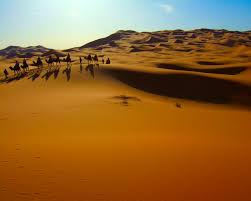The Best Natural Attractions in Morocco



Cascades d'Ouzoud: The most scenic waterfalls in the country, the Central High Atlas's Cascades d'Ouzoud plunge 100m (328 ft.) into the river below, and the crashing water, surrounding lush woodland, and rural atmosphere have made this a popular tourist stop on the route between Marrakech and Fes. Here you'll also likely encounter the indigenous Barbary macaque monkey.
Todra Palmeraie & Gorge: Following the Oued Todra to its aboveground source provides the traveler with stunning views of the lush, green Todra Palmeraie. Walking within the palmeraie is a wonderful attack on the senses, as fruit and palm trees overlook crops of grains and vegetables. The palmeraie ceases at the entrance to the majestic Todra Gorge, 300m (984 ft.) in length, 50m (164 ft.) across, and with towering 300m-high (984-ft.) walls. Here you'll find the aboveground beginnings of the Oued Todra, and dipping your toes in its icy waters is the best way to relax and take in one of Morocco's most dramatic natural sights.
Erg Chebbi & Erg Chigaga: Morocco's two most accessible sand seas are fed by the ever-advancing Sahara Desert, and their color can change from golden to rust red, depending on the time of day. They are reached by crossing a flat, rocky desert plain called the hammada, and your first glimpse of their mountainous dunes is something to treasure. Comparisons between the two ergs is inevitable, but whichever one you choose, the effort to get there is definitely worth it.
Western High Atlas: The western end of the High Atlas mountain range is home to most of Morocco's -- and some of North Africa's -- highest peaks, and can be conveniently accessed on a day trip from Marrakech or Ouarzazate. The 4,167m-high (13,671-ft.) Jebel Toubkal is often snowcapped for much of the year, while the area's lower grassy slopes and valleys are delightfully pleasant and cool retreats from the hot plains below.
Agadir Bay: Golden sand stretches around this crescent-shaped bay for 9km (5 1/2 miles), most of which is protected from the often-strong sea breeze. With relatively calm Atlantic waters lapping on the shore, the bay has attracted many international resort chains on the southern edge of Agadir city. Large numbers of tourists lazing on roped-off private beaches are more reminiscent of Europe than Morocco, but the bay is big enough for everyone and is a warm delight for most of the year.
Oualidia Lagoon: This crescent-shaped lagoon -- fringed by golden sands and protected from the crashing Atlantic waves by a naturally formed breakwater -- offers perfect conditions for fishing, sailing, surfing, and swimming. It's also home to Morocco's small oyster-farming industry. Apart from the summer holiday months of July and August, the otherwise sleepy village on the lagoon's shores offers a select range of comfortable accommodations and fine seafood restaurants, adding up to a great spot for few days of relaxation and recreation.
Middle Atlas Cedar Forests: Unlike the often-barren High Atlas range, the Middle Atlas often comes as a pleasant surprise with its swathes of forested peaks and valleys. The scent of cedar trees abounds here, and a day's exploration around Ifrane and the nearby Mischiflen crater rewards the traveler with glorious views of these majestic trees. There's also the chance to encounter the indigenous Barbary macaque monkey and breathe in some of the freshest and most aromatic air in Morocco.
Tafraoute & Environs: Found within the Anti-Atlas range, the boulder-strewn mountains and lush palmeraie around the small village of Tafraoute are an artist's dream. Depending on the time of day, the boulders -- some seemingly clinging to the cliff face -- can be a palette of gold, gray, or pink. Coupled with valleys of green palmeraie and the white and pink blossoms of almond trees, this is one of Morocco's most scenic yet least visited areas.
morocco culture,moroccan food,morocco food,moroccan cuisine,morocco beaches,moroccan meal,beaches in morocco,moroccan culture,hercules cave,hercules cave morocco






